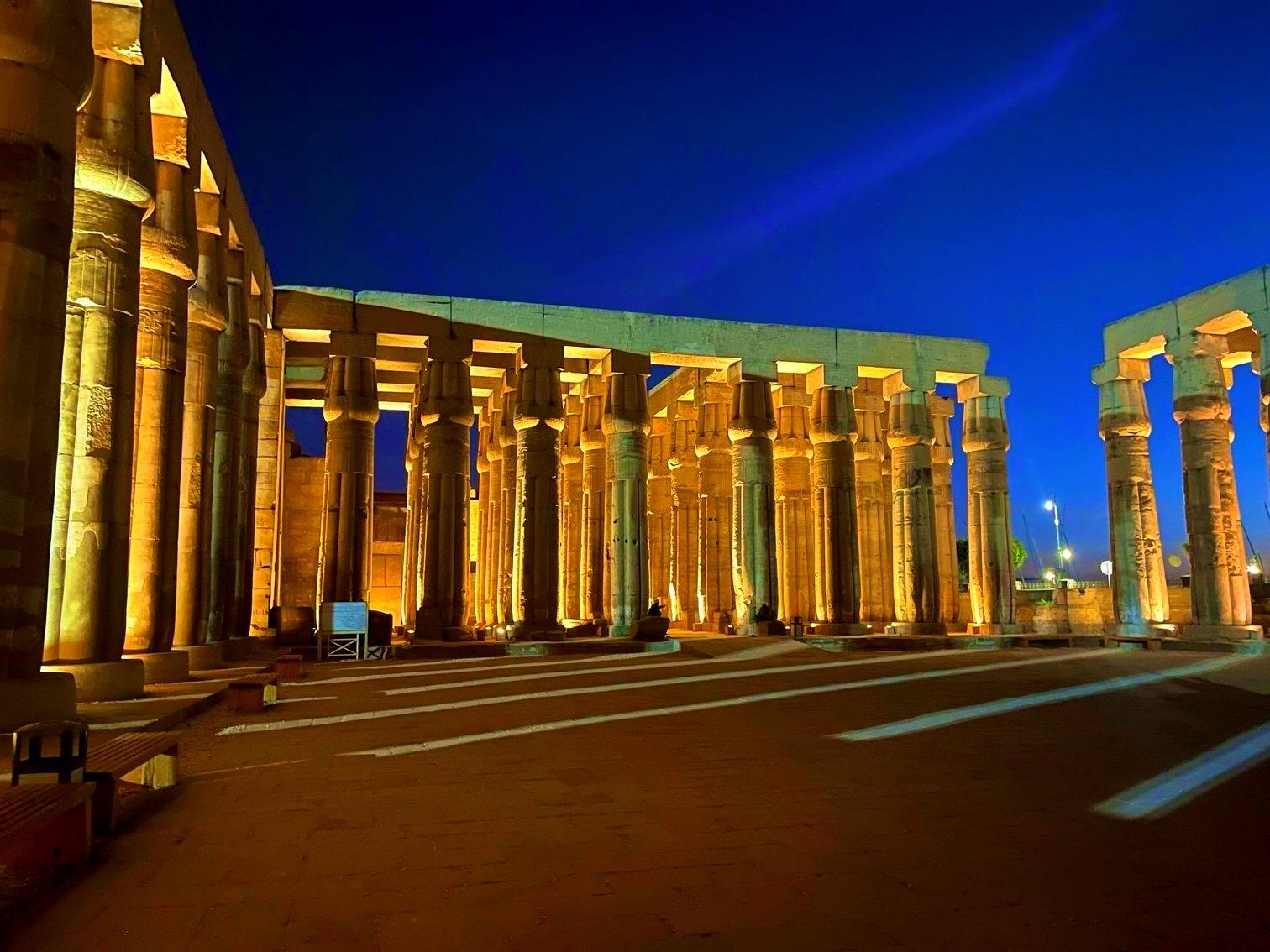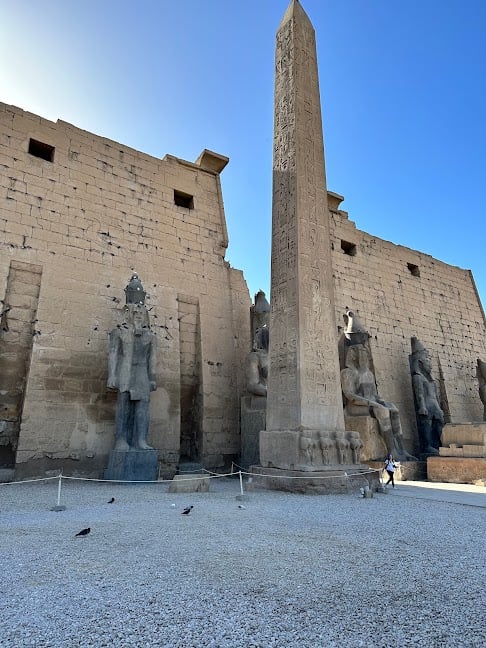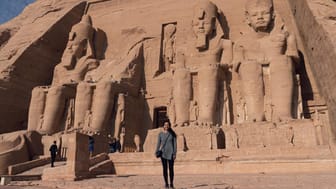Luxor Temple





Ask ThatchGPT
Suggest a local expert to plan my trip
Suggest an unique itinerary for my Luxor trip
What foods do Luxor locals eat
What are some true hidden gems in Luxor
Help me brainstorm trip ideas for Luxor
Help me plan a family-friendly trip to Luxor
What people say
Leo Scarton
Available for hire
"Welcome to Luxor Temple, a marvel of ancient Egyptian architecture and history. This sacred site, built around 1400 BCE during the New Kingdom, stands on the east bank of the Nile River.
As we enter through the colossal pylon, notice the intricate reliefs depicting military victories of pharaohs. These carvings on the first pylon showcase the power and prowess of ancient Egypt.
Moving into the main courtyard, observe the Avenue of Sphinxes – a grand procession pathway lined with sphinx statues symbolizing the unity of pharaoh and divine power.
The Great Colonnade, with its towering pillars and papyrus-bundle capitals, reflects the architectural finesse of the time. This area was used for grand festivals dedicated to the gods Amun, Mut, and Khonsu.
The inner sanctum held the Holy of Holies, where the divine presence of Amun-Ra was venerated. The intricate carvings and hieroglyphs on the walls narrate tales of gods, goddesses, and the pharaohs' triumphs.
Luxor Temple is a testament to the spiritual and cultural richness of ancient Egypt, where the past comes alive through its grand structures and detailed inscriptions.
MORE ABOUT LUXOR TEMPLE
Certainly, there are more fascinating details to explore about Luxor Temple:
Purpose and Function:
Luxor Temple served as a center for religious ceremonies and festivals dedicated to the Theban Triad – Amun, Mut, and Khonsu.
It was linked to the Karnak Temple by the Avenue of Sphinxes, creating a symbolic path for processions during religious celebrations.
Construction Phases:
Luxor Temple underwent several construction phases initiated by Amenhotep III and later expanded by Tutankhamun, Horemheb, and Ramses II.
Many pharaohs left their mark on the temple, adding structures and inscriptions over the centuries.
Obelisks:
Originally, Luxor Temple featured two colossal obelisks at its entrance. One of them, known as the Luxor Obelisk, now graces the Place de la Concorde in Paris, a gift from Muhammad Ali Pasha of Egypt to France in the 19th century.
Roman Occupation:
Luxor Temple, like many ancient Egyptian temples, saw modifications during the Roman period. The Romans constructed a chapel dedicated to the imperial cult within the temple complex.
Religious Significance:
The temple was believed to be a dwelling place for the gods, and its ceremonies were essential for maintaining Ma'at, the concept of cosmic balance and order in Egyptian belief.
Rediscovery:
Luxor Temple, like many ancient Egyptian sites, was buried under centuries of sand and debris. It wasn't until the 19th century that extensive excavations uncovered its splendors.
Modern-Day Use:
Today, Luxor Temple is a UNESCO World Heritage Site and a major tourist attraction. The Sound and Light Show held here narrates the history of the temple and the civilization it represents.
Architectural Highlights:
The temple features a hypostyle hall with massive columns, intricate statues, and well-preserved avenues of sphinxes.
Luxor Temple stands as a testament to the enduring legacy of ancient Egypt, inviting visitors to step back in time and witness the grandeur of a civilization that left an indelible mark on human history."
Read more in:
Tomeka H
"
Luxor Temple in Egypt is stunning! You can easily get there by foot or taxi from your hotel in Luxor. It's worth checking out with all its colossal statues and intricate carvings. If you're up for it, joining a guided tour could add some interesting insights. As for tickets, they're around 120 to 180 Egyptian pounds for adults, but you might get a student or child discount. Enjoy your visit!"
Read more in:
Nardine Mettry
"✔️It's different because it was not built for worship. Instead, it’s dedicated to the “rejuvenation of kingship."
💡: It's open till 10pm, you could visit it before sunset to experience the natural light AND see it lit up at night once it gets dark (could get crowded, though)."
Read more in:
Mentioned in these guides
About Luxor Temple
Get the inside scoop on Luxor Temple from local experts, travel creators, and tastemakers. Browse genuine trip notes, Luxor Temple reviews, photos, travel guides, and itineraries from real travelers and plan your trip with confidence.
Save this spot for later or start mapping out a new trip today
Try our AI Travel Assistant and get instant answers to any questions about your trip.
Ask ThatchGPT


